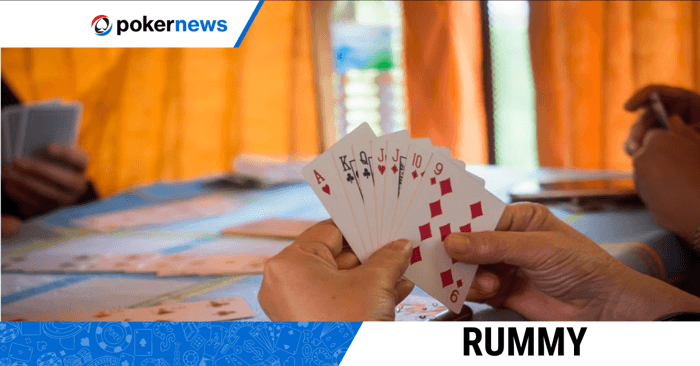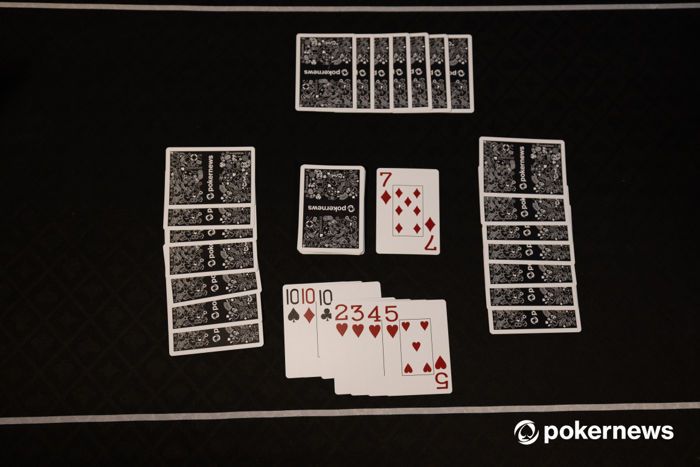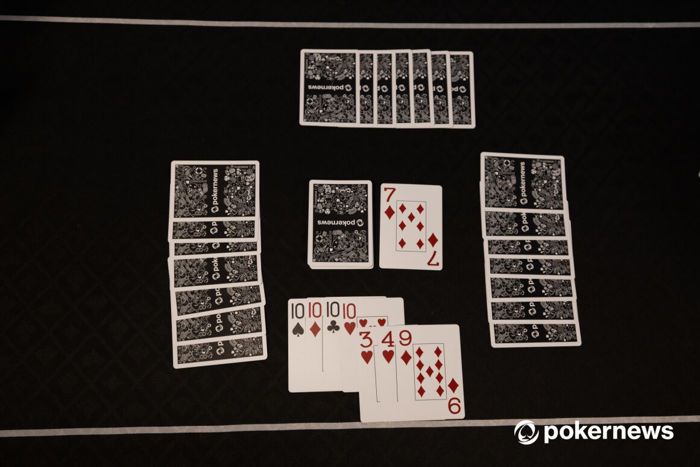How to Play Rummy - Rules, Strategies, and Enjoyable Gameplay

The PokerNews team brings you a host of articles on the world of Rummy, a timeless card game renowned for its unique blend of skill and strategy. Within this comprehensive guide, unravel the fundamental rules, strategic insights, and valuable tips that promise to enhance your Rummy gameplay, catering to both novices and seasoned players alike.
Get ready to dive into the enjoyable and strategic realm of Rummy with our complete guide on How to Play Rummy.
Rules of Rummy
In the intricate tapestry of Rummy, understanding its fundamental rules is paramount. The game typically involves two to six players and a standard 52-card deck. The objective is to form sets (three or four cards of the same rank) and runs (three or more consecutive cards of the same suit). The dealer distributes ten cards to each player in a two-player game and seven cards when there are three or more players.

The remaining cards become the draw pile, with the top card placed face-up beside it, initiating the discard pile. Players take turns drawing and discarding cards, striving to meld their entire hand. Delving into the nuances of melding, card picking, and strategic discarding lays the foundation for an engaging and competitive Rummy experience. Whether you're aiming to master the basics or seeking to refine your strategic prowess, a solid grasp of the rules is the key to unlocking the full potential of this timeless card game.
How to Play Rummy
Playing Rummy involves a strategic dance of drawing and discarding cards. A player's turn unfolds in distinct phases, beginning with drawing a card from either the draw or discard pile and concluding with the strategic decision of discarding a card. The key lies in melding sets and runs, optimizing your hand for victory.
Beginners can grasp the basics swiftly, while seasoned players refine their tactics by observing opponents' discards and adapting their strategies accordingly. This step-by-step guide serves as a comprehensive playbook, offering insights into the intricacies of Rummy gameplay. Whether you're a novice or aiming to elevate your skills, mastering the art of drawing, discarding, and strategic play is essential for a rewarding Rummy experience.
Winning Strategies for Rummy
Achieving victory in Rummy requires a nuanced approach that extends beyond the mere understanding of rules. One key strategy lies in comprehending the significance of melding �C the art of forming sets and runs efficiently. Strategic card management is equally crucial, involving astute decisions in drawing, discarding, and manipulating your hand to maximize potential combinations.
Observing your opponents' moves becomes paramount, allowing you to adapt your strategy based on their discards and thwarting their attempts to meld. This section unveils winning strategies for Rummy, guiding you through the intricacies of melding, card management, and strategic play. By assimilating these tactics, you can pave the way for consistent success in this captivating and strategic card game.

Enjoyable Aspects of Rummy
Rummy's enduring popularity lies in the perfect balance it strikes between skill and luck, creating a dynamic and engaging gameplay experience. The social dynamics of multiplayer Rummy add an extra layer of enjoyment, fostering camaraderie and friendly competition among players.
What makes Rummy truly delightful is the satisfaction derived from orchestrating winning combinations, whether it's a perfectly crafted set or an expertly arranged run. The game's versatility allows players to enjoy it in various settings, from casual family gatherings to competitive tournaments. Whether you relish the strategic elements or savor the social aspects, Rummy encapsulates the joy of card gaming, offering an immersive and enjoyable experience for players of all backgrounds and skill levels.
Other Rummy Articles
FAQs - How to Play Rummy
Can a player go out without completing a set or run in Rummy?
No, a player cannot go out without completing a set or run in Rummy. To declare and end the round, a player must meld all their cards into valid sets and runs. This ensures a fair and complete resolution of the game, requiring strategic planning to achieve victory.
What happens if a player draws the last card needed for a meld in Rummy?
When a player draws the last card needed for a meld in Rummy, they have the option to immediately lay down the meld. This action is known as "going out" or "declaring." It signifies that the player has successfully organized their entire hand into valid sets and runs, making them the winner of that round.
Are there variations in the number of cards dealt in different Rummy variations?
Yes, there are variations in the number of cards dealt in different Rummy variations. While the standard practice is to deal ten cards in a two-player game and seven cards in a game with three or more players, some Rummy variations may alter these numbers. It's essential to be familiar with the specific rules of the Rummy variation being played.
Can a player skip their turn in Rummy, and if so, what are the implications?
In Rummy, players cannot skip their turn. Each player must draw a card from the draw or discard pile and then discard a card at the end of their turn. Skipping a turn is not a permitted action, ensuring a continuous and interactive flow of gameplay.
How are points calculated in Rummy, and what contributes to a player's score?
Points in Rummy are calculated based on unmelded cards in a player's hand. Face cards carry higher point values, with each numbered card contributing its face value. The first player to meld their entire hand scores zero points for that round. The remaining players accumulate points based on the cards left in their hands, fostering strategic decision-making throughout the game.
